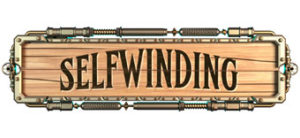I Tweet, Therefore I Write
Twitter is one of my favorite online resources for writing. It’s a great place to meet writers and find opportunities and inspiration. Everyone uses Twitter differently, but here are five ways I use Twitter to help my writing career.
1. To Connect With Other Writers
Connecting with other writers is one of the best things about Twitter. For me, having an account isn’t about promoting my own work; it’s about connecting with people and sharing experiences. Other writers remind me I’m not alone in my struggles, and they are the best sources of support, whether they’re active in my creative process and let me bounce ideas or critique my work, or are just there to share the misery of discovering I need to rewrite eight chapters of a novel.
While I already have several writer friends who use Twitter, I pick up more writers by doing events like NaNoWriMo or by tweeting about writing and tagging it #amwriting. The #amwriting hashtag is a great way to meet writers or to just offer support to a stranger. A lot of the responses I get to my #amwriting tweets are things like, “Keep at it!” or “Know what you mean,” but even the littlest interactions are opportunities to grow my writing community and make a new friend.
2. To Learn About Craft, Strategies, and the Writing Life
Twitter is my number one place for finding articles and posts that discuss various elements of writing craft and life. Sometimes I’ll hone in on issues that I’m having or stuff that I just like to read about (hello, world building and productivity), but the breadth of topics never leaves me wanting. The trick is curating a good list of people to follow who make sense for me. That means I look for Twitter accounts that link to a variety of writing topics. That includes authors like Elizabeth S Craig and Joanna Penn, and accounts that specifically focus on teaching writers like DIYMFA. Genre twitters like Mythic Scribes and Science Fiction are great for focused articles that hit on genre-specific issues. And it’s easier to find these accounts than I thought it would be since Twitter helpfully suggests similar accounts and often times writers will retweet or talk about a new account to follow. Recommendations make the Twitter world go round.
3. To Find Inspiration
I have found so much inspiration on Twitter, though a lot of that inspiration has come from outside the Writing Twitter World. Back in May I found an article on the Radium Girls of World War I, and a few years ago a friend retweeted a song that severed as the inspiration for the novel I’m currently working on. Accounts related to my genres have provided a lot of inspiration—The Victorian Society and Victorian London have been great for steampunk inspiration and research, as has History In Pictures, an account that posts historical photos perfect for an alternate history author. There really is a lot of inspiration available on Twitter, as long as I’m open to a new idea.
4. To Find Publishing Opportunities and Tips From Insiders
Most literary magazines and publishers have Twitter accounts, and following those accounts are a good way to stay informed about publishing trends and when literary magazines are looking for submissions. I also take advantage of free content to get an idea for what kinds of stories are being published to figure out if I have any stories that might appeal to their editors.
Like following publishers, editors and agents are great sources of information. Recently I’ve been perking up every time an agent tweets a query tip. Many of these tips fall along the lines of “please, stop doing this specific thing,” but recently I saw a tweet from an agent (Kurestin Armada) recommending that if you receive an offer of representation and are notifying other agents who have your query, attach the complete manuscript. I wouldn’t have considered doing that, but hearing the reasoning from the agent gave me the confidence to be so bold!
5. To Find an Agent
I’ve been on the agent hunt this summer, and Twitter has been one of my key tools for discovering and researching agents. Two of the best sources for information and making connections are the #MSWL hashtag and pitch fests.
#MSWL is a hashtag for agents and editors to post their manuscript wish list. While MSWL tweets can appear at any time, there is usually a designated day during the year when the hashtag is most active. During my agent search, it’s been a powerful tool for gaining insight into an agent’s wants and figuring out if I’m right for them, and if they’re right for me.
Pitch fests like #PitMad are an opportunity for writers to let agents know what they have ready to go. During Pitch Madness (#PitMad), authors with completed ready-to-query manuscripts, pitch their book in a tweet. Agents and editors favorite tweets to show their interest. It’s a great way to find agents you might have otherwise skipped querying because—hello, they’ve already told you they’re interested in your story!
I recently participated in a sci-fi/fantasy pitch fest called #SFFpit that garnered likes from three agents—all of whom I queried. Fingers crossed!


But if you’re tweeting #amwriting, you’re not really writing, are you? You see, this is why Twitter confuses me.
Confused in Colorado,
aka Chrysta
LOL. A lot of my #amwriting tweets actually come either before or after I finish a writing session. For example: Yesterday I finished the hard copy review on the novel. Today I start addressing comments and adding scenes.
Checking in with other writers is always a good experience. And it’s a good way to vent frustrations in a positive light.